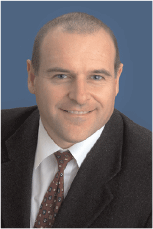Turning the light on inattention
Cristian SylvestreSafeStart.
The APPEA Journal 54(2) 507-507 https://doi.org/10.1071/AJ13080
Published: 2014
Abstract
In the past few years, the number of articles and alerts (including some from regulatory authorities) attributing incidents to inattention and/or complacency has increased. Why do so many people still get hurt even though we do so much to try to keep them safe? Most incidents do not happen because the person was not competent, did not know about the hazard or what controls were required. Incidents typically happen because the person was not paying attention at the time; as a result, they get involved with a hazard. Traditional approaches to rectify this focus on:
retraining, in case the problem was a lack of knowledge;
reviewing the decision making framework, in case it was a bad decision or the wrong choice; and/or,
disciplining, in case it was a deliberate act.
The problem of inattention, however, cannot be solved by these approaches. For our inattention, we are accustomed to blaming tiredness, problems at home, outside distractions, and other external factors not in our control. Recent research has identified that more than 95% of personal safety incidents involved inattention (the autopilot mode) leading to an unsafe act. Co-incidentally, the latest neuro-scientific research has discovered that 95% of our actions are subconscious. People can not always control distractions and external factors, but they can influence their subconscious actions (their habits) so what they do in autopilot is the safest thereby preventing many incidents—not just for safety but also for other areas of business.

Cristian Sylvestre, the Managing Director of SafeStart, is a human error prevention specialist. He holds a chemical engineering degree with Honours and a master’s degree in environmental engineering. Crstian has had a long career in the safety field having held various senior safety and environmental roles in ICI, Shell and other organisations across a 20 year period where he has acquired a different way of thinking about personal safety. Cristian works with organisations developing and implementing leading-edge programs focused at improving the attention level of individuals. His work encompasses all levels of management and specifically prepares leaders to help individuals be more attentive. The programs he has implemented have helped organisations reduce incident rates by 30–70% within 6–12 months. |
References
Bargh, J., and Chartrand, T. (1999). The unbearable automaticity of being. American Psychologist 54, 462–79.Kahneman, D., 2011—Thinking, fast and slow. New York: Farrar, Strauss and Giruoux.
Patterson, J., and Shappell, S., 2009—Analysis of mining incidents and accidents in Queensland, Australia from 2004–2008 using the HFACS-MI framework. Report by Clemson University. Brisbane: Simtars, Queensland Mines and Energy.
Queensland Government, 2010—HFACS-MI Project. <http://mines.industry.qld.gov.au/safety-and-health/HFACS-MI-project.htm>.
Safe Work Australia, 2012—The cost of work-related injury and illness for Australian employers, workers and the community: 2008–09. Safe Work Australia report published March 2012. Canberra: Safe Work Australia.
Shibuya, H., Cleal, B., and Kines, P. (2010). Hazard scenarios of truck drivers’ occupational accidents on and around trucks during loading and unloading. Accident Analysis & Prevention 42, 19–29.
Talbot, R., Fagerlind, H., and Morris, A., 2013—Exploring inattention and distraction in the SafetyNet Accident Causation Database. Accident Analysis & Prevention, 60 (November 2013), 445–55.
Toates, F. (2006). A model of the hierarchy of behaviour, cognition and consciousness. Consciousness and Cognition 15, 75–118.
Wilson, L., 2001—Behaviour based safety and the construction industry. Construction and Engineering Safety Magazine, September 2001.


